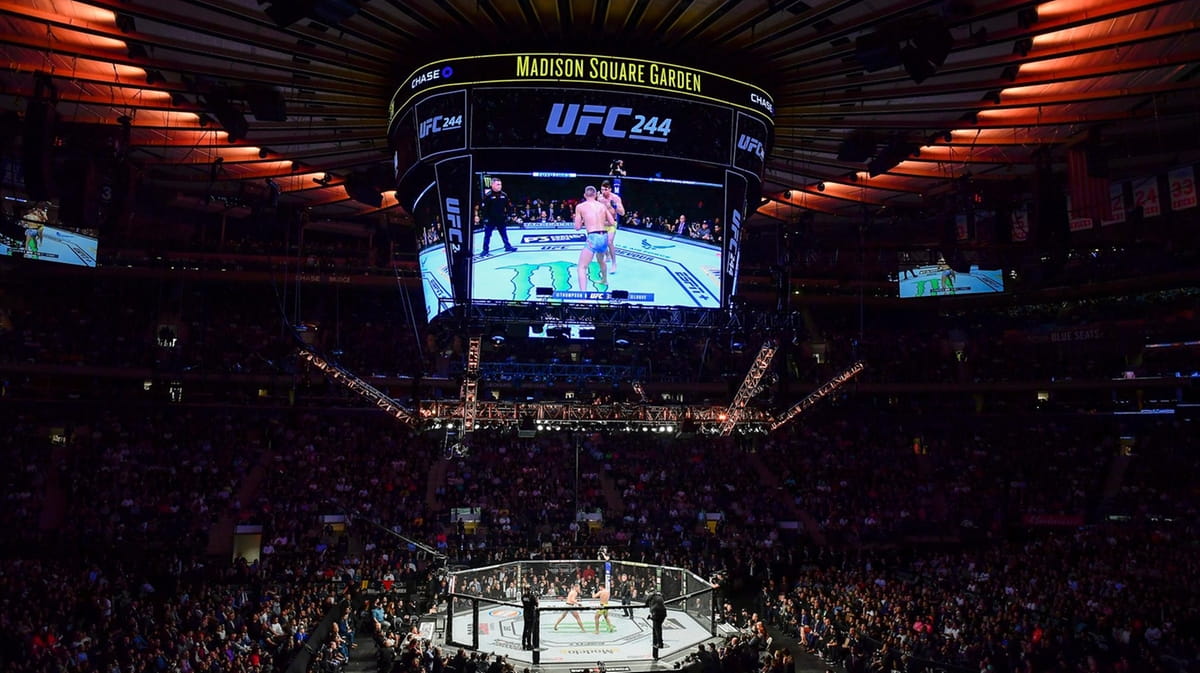It's hard to believe that after five years, 27 sanctioned and regulated events and nearly $6 million in ticket sales tax revenue collected by the state that there ever was any debate about legalizing mixed martial arts in New York.
But, oh, was there plenty of debate. Eight years of it, in fact, with much of it rooted in political wrangling than anything actually involving the sport of MMA.
That’s history now, a collection of tales left to future documentaries and to-be-written memoirs.
After another successful major MMA card last month at Madison Square Garden — where UFC 268 posted the fourth-highest live gate of any event ever at the famed venue — the state of mixed martial arts in New York makes all of that look even sillier now than it did then. The New York State Athletic Commission, after some early hiccups, is running smoothly, fans are coming out in bigger numbers than before the pandemic and the state is making money.
"Think about how long it took us to get here. And we’re the No. 1 all-time gate here at MSG and now No. 4," UFC president Dana White said after UFC 268. "Think of all the massive events that have been here. And we’re No. 1. Sheldon Silver is in jail, and we’re No. 1."
Silver was the State Assembly Speaker under whom the bill to legalize MMA never made it out of committee. In January 2015, he was arrested and charged with corruption and later convicted on those federal charges.
MMA was legalized on March 22, 2016, by an overwhelming 113-25 vote in the State Assembly. Then came Nov. 12, 2016. UFC 205. The first MMA event in New York City. Madison Square Garden. Conor McGregor at the height of his stardom.
"For the UFC and for the sport, it was just such an important night, because it eliminated a stigma. It showed that we could deliver a product at the highest level you could ever have. We’re not talking about any market in the country, we’re talking about New York City," UFC chief operating officer Lawrence Epstein told Newsday. "It was the culmination of a lot of work, but it was just the beginning of what was going to happen with the UFC and mixed martial arts in the state of New York."
For the New York State Athletic Commission, the real work was about to get started.
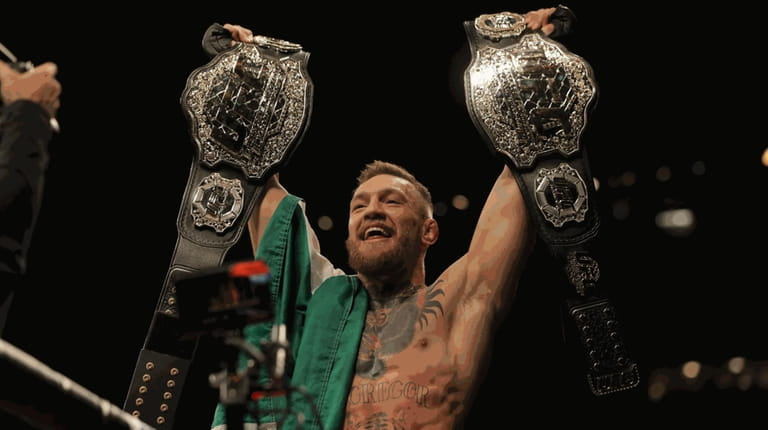
Conor McGregor now has two titles after beating Eddie Alvarez in the second round for the UFC lightweight title at UFC 205 at Madison Square Garden on Nov. 12, 2016. Credit: Jeffrey Basinger
Growing pains
What makes an MMA event successful in the eyes of the New York State Athletic Commission?
"That you don’t hear about NYSAC in the news," executive director Kim Sumbler said jokingly during an interview with Newsday.
But there is a good deal of truth in that statement. When the UFC first started bringing its events to New York, there were several times the commission came up in not necessarily the nicest of connotations.
At UFC 205 in November 2016, the first MMA event sanctioned and regulated by NYSAC, there was some confusion about allowable weight differences between fighters. Thiago Alves weighed in at 162.6 pounds, far above the 156-pound limit for a lightweight fight. That forced Jim Miller to partially rehydrate and technically miss weight at 157.6 pounds. But that put him within five pounds of Alves, so the fight could happen under NYSAC rules. The differences were spelled out in NYSAC’s guidelines, but since this was the first event in New York and one of the first times such an issue had come to light in MMA, the commission received some negative commentary in the moment. Plus, Kelvin Gastelum was suspended for six months by NYSAC (later rescinded) for not weighing in after he pulled out of his fight with Donald Cerrone during the weigh-ins because he was too heavy.
The negative narrative continued from fighters and their camps, focusing on the amount of time it took to do medicals after weigh-ins. That talk has subsided in the years since as NYSAC has gained more experience and its procedures are more well-known.
"We don't have any more medicals than anybody else in the country," Sumbler said. "What the big difference is with us, it's the physical. I want to give our team the best possible opportunity to get to know this athlete, know their exact current condition before we can make a decision on whether they're able to compete the next day or not."
At a UFC event in Albany in December 2016, NYSAC was criticized by fighters for not having a doctor on site who could stitch them up after the fight. Instead, they were sent to a nearby hospital, causing more negative headlines.
Six months later, UFC 210 in Buffalo was a triple combination of doom for the commission. Daniel Cormier first weighed in at 206.2 pounds, 1.2 pounds over the limit for a light heavyweight title fight. A few minutes later, he removed all his clothing and was covered by a towel as he stood on the scale again. He grabbed the towel with both hands and came in at 205 pounds, thus qualifying to defend the title against Anthony Johnson. No observers from the commission intervened to stop Cormier.
That towel was held in place by two UFC employees, just as it always had been when fighters needed to remove all their clothing on the scale to try to get under the weight limit.
"Since that time, we don't let any of our employees [do it]," Marc Ratner, UFC’s vice president of regulatory affairs, told Newsday. "It has to be neutral people or commission people who put a towel up."
In the years since, the UFC has evolved from a towel to a curtained hoop to now a draped box structure that surrounds the scale to protect fighters from any unnecessary exposure.
Also on that Buffalo card, Pearl Gonzalez initially was deemed ineligible to compete because she had breast implants. It was an "archaic regulation," Sumbler said, from boxing, and one that was addressed that day, allowing Gonzalez to fight.
"Not understanding the nuances and the differences between boxing and MMA at the time, in New York's mind I think it was more of a collective, ‘This is a combat sport, so we're going to regulate them all the same,’" Sumbler said. "Come to realize of course, that they're very different sports. Although yes, they are both combat sports, they're very different sports, and they have to be regulated very differently. And rules that apply to boxing don't necessarily apply to MMA."
That Buffalo card also saw confusion with the use of replay and the rules surrounding a downed opponent in the Chris Weidman-Gegard Mousasi fight. Mousasi connected with several knees, and the referee paused the fight, ruling the knees as illegal. During Weidman's recovery time, the outside referee watched replay and said the knees were legal. Weidman was then declared unfit to continue and Mousasi declared the winner. It was believed at the time that NYSAC did not allow for replay review, but the commission issued a statement days later saying its use is allowed.
NYSAC also amended language in its MMA guidelines after the Buffalo card to state a fighter "shall not make physical contact with any person or object other than the scale."
That language came into play at UFC 244 in November 2019, when Gastelum made contact with another person while on the scale. His weight was deemed legal and he was allowed to fight, but NYSAC said Gastelum, who has a history of struggling to make weight, would face disciplinary action.
Then there was the fallout from Conor McGregor’s bus attack during UFC 223 week in Brooklyn. He was not fighting that week, but when he stormed the Barclays Center after media day and launched a hand cart into the window of a bus carrying Khabib Nurmagomedov and other fighters back to their hotel, that had a trickle-down effect. While McGregor was in court facing felony criminal mischief and assault charges, Ray Borg had glass in his eye and pulled out of his fight, and Michael Chiesa suffered cuts to his face and was deemed by NYSAC as unfit to fight. On the morning of weigh-ins, Max Holloway, who accepted the fight against Nurmagomedov on six days’ notice, was not allowed to continue cutting weight.
"We took a lot of beatings, and I think sometimes beatings are good," said Sumbler, who began as the MMA project coordinator before becoming NYSAC's executive director in August 2017. "Beatings help us learn and grow. Nobody likes a beating, especially publicly. But I think accepting things that we didn't do so well and accepting responsibility for those things, all you can do is change it. All you can do is work hard to make it better. I think we've done that. I think we've done that very well. And we'll continue to do that."
These are among a small handful of incidents that have arisen in five years of regulating a sport where part of its appeal is that anything can and often does happen on the road to the fight, let alone the fight itself. That’s a run of 27 events regulated, which includes more than 300 fights and more than 600 fighters.
"They hadn't really had MMA, so it took some learning and education, but ever since we've been there, it's been wonderful," Ratner said. "Really, we've had very limited problems whatsoever and we just go forward and we love coming there, whether it's the Garden or Barclays or any anywhere else we've been it's been fabulous."
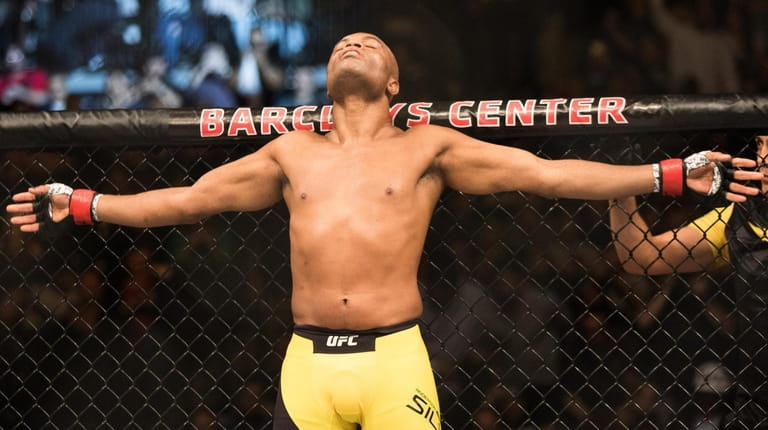
Anderson Silva. Credit: Newsday/Jeffrey Basinger
New York State in mind
Keeping with the extended level of care for fighter safety, NYSAC requires its doctors to enter the cage in between rounds to examine the fighters.
Yes, referees and inspectors already are in the cage to keep an eye on the fighters, but they’re not doctors, and they wouldn’t necessarily know of any past medical issues with a particular fighter. To help with this continuity of care, the doctor who examined the fighter at weigh-ins the day before is assigned to their fight as well.
"Having our doctor go in there and having a look at these athletes, getting a close look, I think it just provides more peace of mind to us and provides more peace of mind to the referees that are in the ring," Sumbler said.
Sumbler said the commission faced early opposition to this idea, but that has changed, to the point where other states have started doing the same thing.
"It's a good tool that we use to provide, again, that extended level of care," Sumbler said. "And that is something that other commissions are picking up. They're starting to use it and so yeah, I'm very proud of that. Because we really took a lot of heat for that in the beginning. But it's become commonplace, it's become normal and people have realized that it's not the disruption that they thought it was going to be. And it provides our doctors with that added knowledge."
The financial impact
It wasn't until 2013 that then Gov. Andrew Cuomo made his first public comments on legalizing MMA in New York, citing it as a potential new revenue stream for the state. That certainly has been the case so far.
After 13 UFC events in New York — five at MSG, three at Barclays Center and one each on Long Island, in Albany, Buffalo, Rochester and Utica — the state has collected $5.2 million in revenue from ticket sales tax.
Add in the 14 other events combined by Bellator, PFL, World Series of Fighting, CES and Flex, and the estimated total hovers around $6 million. Bellator has promoted three events here — two at MSG and one at Nassau Coliseum. The PFL set up residency at the Coliseum for parts of two seasons in addition to its inaugural event and championship nights at Hulu Theater.
MMA promoters pay 8.5% sales tax on ticket revenue, the highest of any state in the country. It’s more than twice the 3% tax boxing promoters pay here, making New York the only state that differentiates between the two.
The UFC estimated a total economic impact of more than $170 million for its New York events, which factors in hotel stays, dining, bars and clubs and all the accoutrements of a weekend stay in New York. Approximately 250,000 fans have attended pro MMA events in New York so far.
"We know that even though maybe we didn't need it, there's absolute value to being regulated and legalized in the state of New York and of course, doing events there," Epstein said. "It's no secret New York is a big city, it's a big media center. There are lots of ripple effects that come out of things that happen in New York and there are no ripple effects from things that don't happen in New York."
Memorable moments
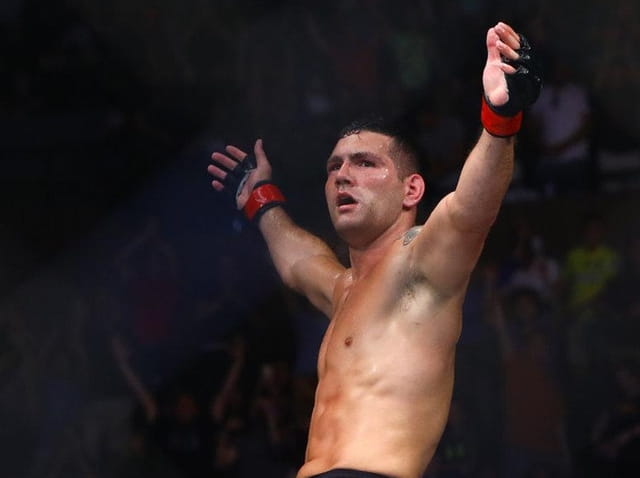
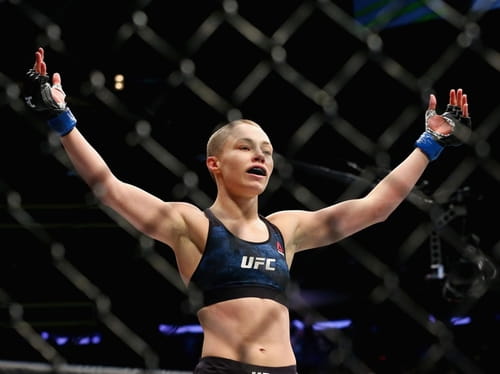
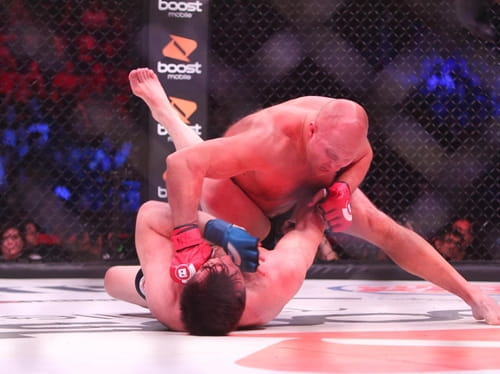
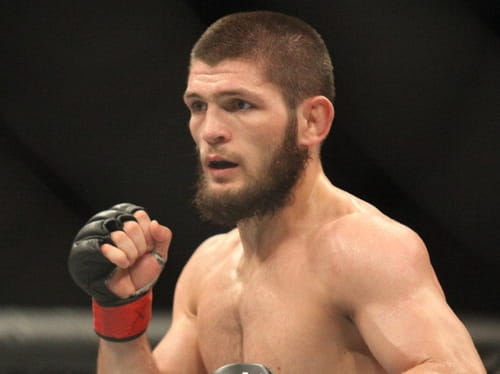
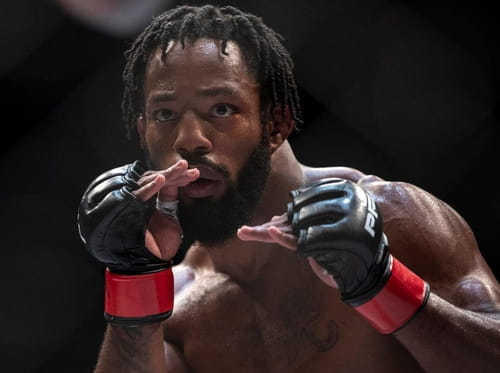
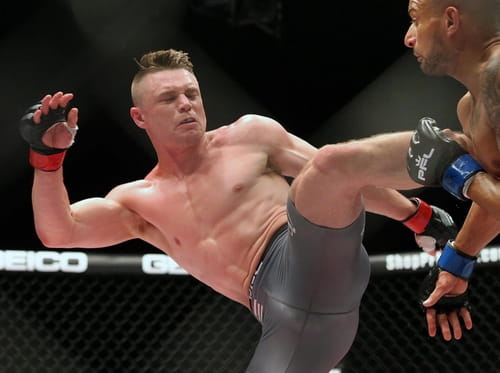
Five years is not a long time for history books. But in mixed martial arts, it represents 17.9% of the sport’s existence. In that time, legalized MMA in New York has delivered its fair share of iconic and notable moments.
The list begins — and probably is topped by — Conor McGregor becoming the first double champ at UFC 205. The event, which included three title fights, set a promotional and MSG record with a $17.7 million live gate. The 20,427 fans rivaled both Muhammad Ali-Joe Frazier fights at MSG. The 15,480 fans at the ceremonial weigh-ins the day before set a UFC record.
UFC 268 attendance last month topped the first card with 20,715 fans. The live gate was $9.9 million, fourth best in MSG history and eighth best in UFC history.
"What it means is that the fans are really, really interested in coming here. They love the event," said Joel Fisher, MSG’s executive vice president of marquee events and operations. "Anytime you have an event at the world's most famous arena, you expect it to be packed. So I think it's very important to all of us, to both the UFC, the city and Madison Square Garden."
Weidman, the face of the fight to legalize MMA in his home state, lost his first two fights in New York octagons. Then came UFC Long Island on July 22, 2017. That saw Weidman, the former middleweight champion from Baldwin, atop the octagon inside Nassau Coliseum basking in the love of his hometown after a victory. Seemingly everyone there that summer night knew him and the five other Long Islanders on the card.
New York has seen Fedor Emelianenko fight here, the birth of the PFL and its million-dollar night of champions, the attendance of a sitting U.S. president at UFC 244, the crowning of Nurmagomedov as undefeated lightweight champion and Cormier’s classic "Thug Rose! Thug Rose! Thug Rose!"
"New York City is amazing. The people here always show me love, kind of to my surprise sometimes just how much they appreciate what I do," said "Thug" Rose Namajunas, who is 3-0 in New York, all title fights. "New York City inspires me. They’re the toughest people in the world. This is the coolest city. A little chaotic sometimes for my liking, but I just love the environment."
What's next for New York?
Sumbler said NYSAC is at a "very comfortable" level in regulating the sport, but there’s more to be done.
There has been little to no middle ground in MMA events in New York. There have been a handful of amateur events, which are regulated by third-party organizations licensed by NYSAC. But all but two of the 27 sanctioned MMA events have been the top promotions.
The pandemic’s shutdown of events gave NYSAC the time and the opportunity to evaluate its position on sanctioning pro-am events. Before, those weren’t an option. Now, they are.
In October, Flex Fight Series promoted by Lindenhurst’s Nic Canobbio hosted the first pro-am MMA event in New York at The Sports Arena in St. James. Their next event is scheduled for Dec. 11.
"To be able to be the first person, the first organization to do it in New York, it was a great feeling," the longtime amateur MMA promoter Canobbio said. "It was a historic night for us. And it was a proud moment for me to do that, to reach a goal that I had."
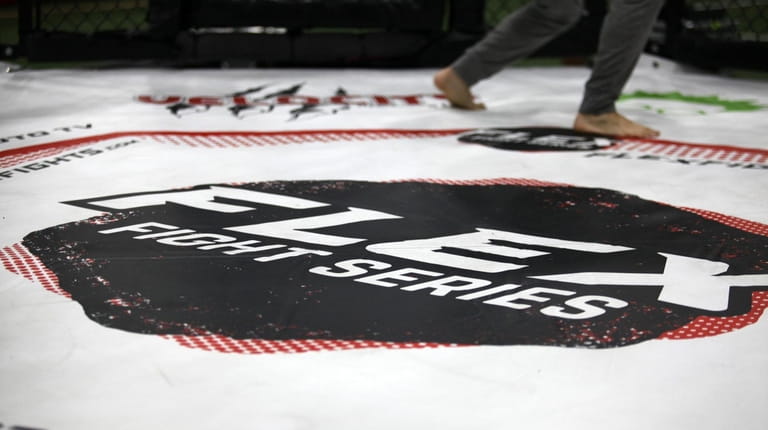
The Flex Fight Series octagon at The Sports Arena in St. James on Friday, Oct. 15, 2021. Credit: Newsday/Mark LaMonica
The change is significant. With the state’s insurance laws for MMA events, the cost of coverage is a hefty burden for smaller promoters. A pro-am event lets the promoter dabble in the pro circuit, with just a few pro fights atop a card heavy with amateurs. It elevates the quality of fighters they can attract and gives the fans a noticeable difference in what they’re watching, yet still keeps a strong focus on developing local amateurs. It also keeps their insurance costs down.
"Promoters are now coming back and saying 'OK, you know, this is cost effective for us to do, where it really wasn't before,' " Sumbler said. "So now all of these people, they want to do pro-am events. So I think that part of our program is really going to blow up in 2022."
Sumbler said NYSAC does have a minimum rounds requirement for a pro-am event. It serves as a way to both build up the local promoters and fights as well as ensure the ticket buyer is getting their money’s worth.
The challenge will come in smaller promoters finding their financial sweet spots. The insurance premiums for New York are the highest in the country, with promoters having to carry a $1 million insurance coverage for life-threatening brain injuries for pro fighters. UFC and Bellator can afford that number, and they can absorb certain medical costs for their fighters and provide medical staff to assist.
"This level is tough because, you know, we're not the UFC," Canobbio said. "We can’t afford to cover some medical bills, we don't have a doctor on staff to send for MRIs, and this and that."
He plans to continue to promote Flex Fights pro-am events in 2022.
Sumbler said she wants to see a fighter be able to start, build and make a career in New York without being forced to go elsewhere because of guidelines and regulations. Stardom changing a fighter’s geography is one thing, but this city is no stranger to hosting stars.
"New York has always been the mecca for boxing," Sumbler said. "Now that New York has MMA, I really want New York to be the mecca for MMA as well. I have high aspirations. Nevada and California and all those states, they've done a fantastic job. I don't have as many MMA fights as they do. But I want that many. I want more."
